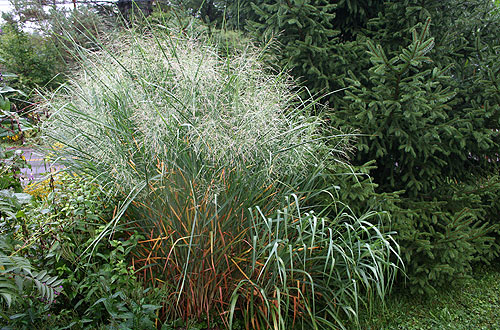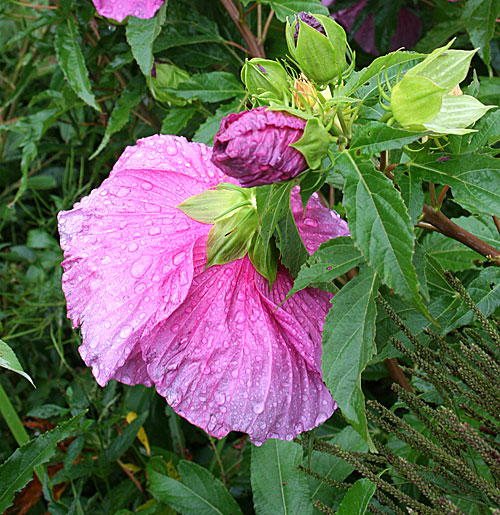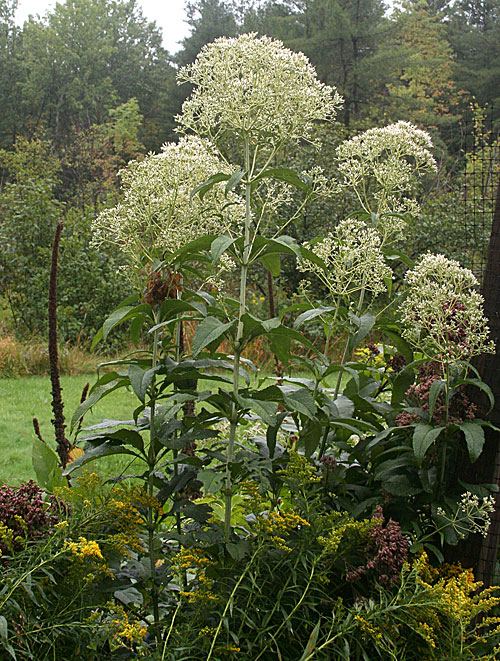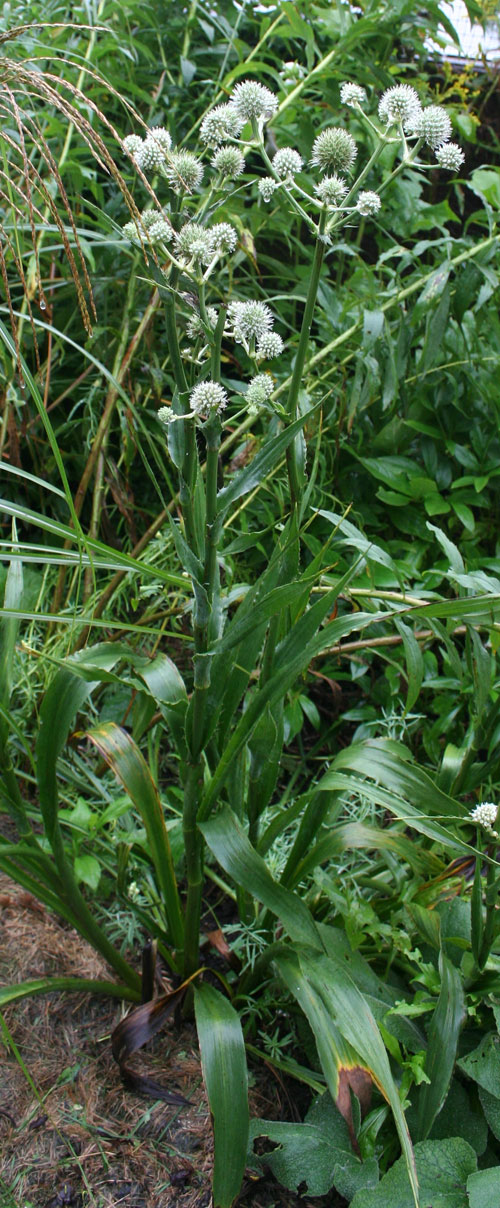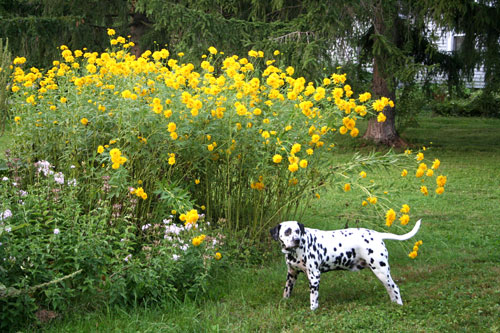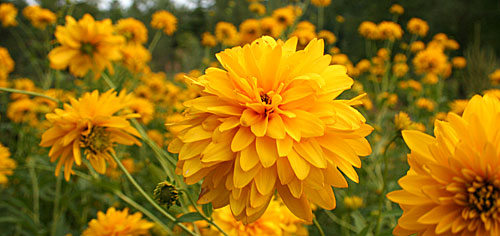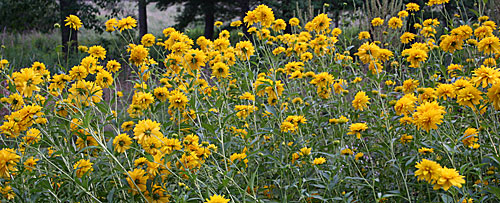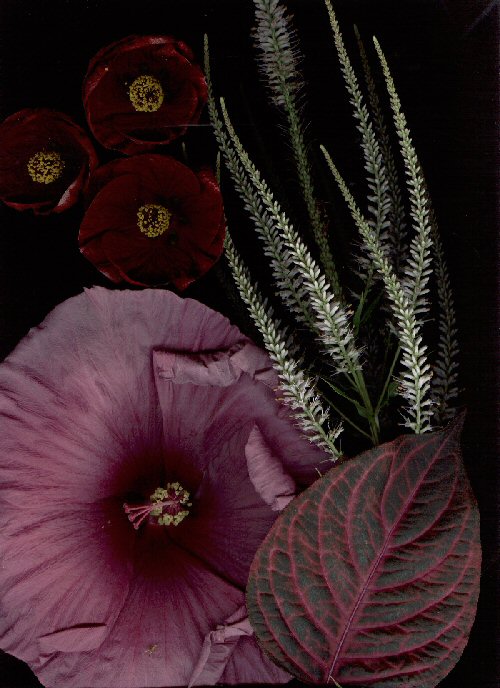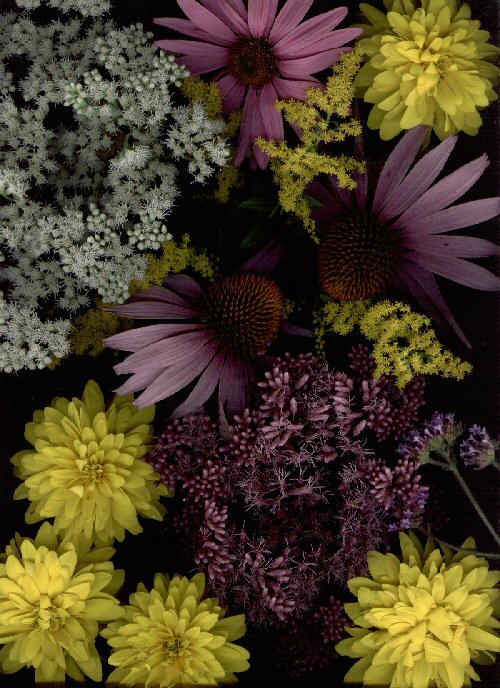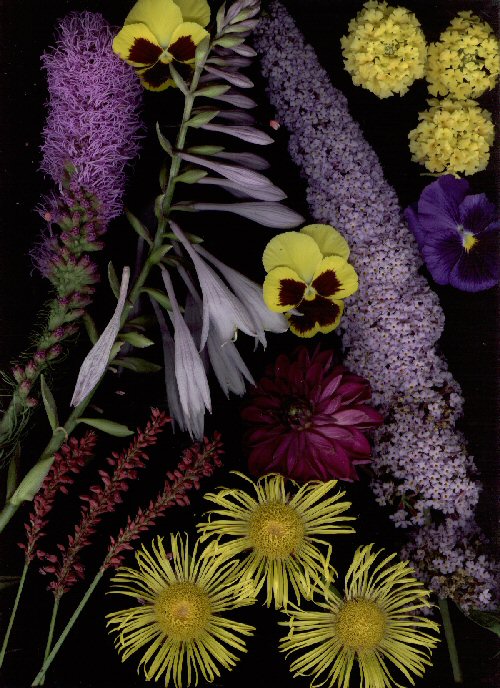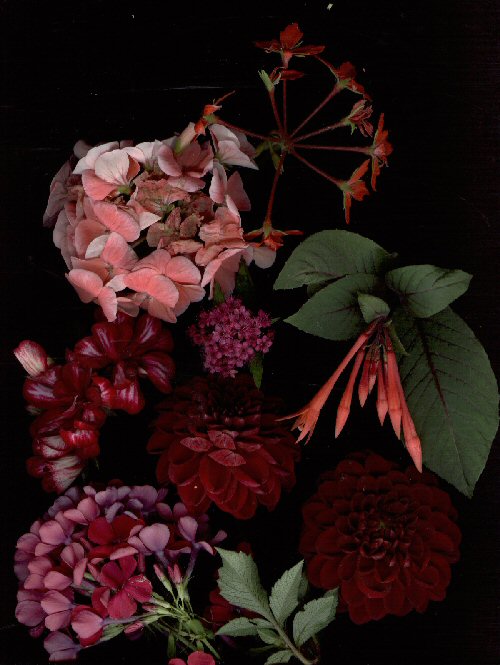Category: Perennials
Herbaceous perennials I grow.
Plants in motion
Some people are drawn to birding over gardening because ‘birds move, plants don’t.’ Au contraire. I am acutely aware of motion in the garden, and enjoy many plants for the mere fact that they start quivering in the slightest breeze.
For example, I’ve heard folks disparage Calamagrostis because most of the time it just looks like dead grass. But it’s the first plant that starts in motion when there’s not even enough wind to get the wind chimes playing. Here it is with a white-flowered artemisia in the foreground:
Ornamental grasses are generally the best for turning wind into motion. There are several here, with Calamagrostis (left) wavering again, Miscanthis (several, center) flying its flag, and Panicum (right) reacting en masse.
[A technical note: I’m very unhappy about the loss of quality when video files are uploaded and compressed by both GoogleVideo and YouTube. It helped to cut back to 15 fps when filming, but still the raw avi files or edited wmv files look much better viewed locally. If you squint viewing these, you’ll probably get the idea. Anyone have tips for maintaining quality when uploading to either of these sites?]
Floppers — those top-heavy plants that most people stake (I sure don’t have the time) — are fascinating in a light breeze. (All of these videos were shot on days when there were only intermittent breezes topping out at about 10 mph.) Here is Rudbeckia laciniata ‘Hortensis’ (the outhouse plant I blogged about recently) bobbing and weaving in a slight breeze.
Here’s Sanguisorba tenuifolia (also the subject of a recent post) which really gets going with just a whisper of a wind. And if you squint, you can see another great top-heavy flopper bobbing around, Joy-pye weed (Eupatorium spp) left background.
Here’s a close-up of the same Sanguisorba, which will give you a good idea of just how much this plant moves in just a very light breeze.
Big leaves are also good at catching a breeze. Tropical plants like elephant ears (left) and bananas (right) start quivering with the slightest breeze.
Mixed plantings give interesting effects. (Hey, you choose plant combinations based on color. Why not on how they move?) There are tall, top-heavy ironweed (Vernonia) in the center of this planting and goldenrod to the left. More Calamagrostis waving down low, left-center with a bluish Panicum behind it. Various shrubs, trees and weeds add to the effects.
Dappled shade can heighten the effects of motion as the overstory moves along with (or counter to) the plants below, which move in and out of light and shade, like these coneflowers.
Sanguisorba tenuifolia
Here’s a delightful plant I had totally forgotten about: Sanguisorba tenuifolia. I think I grew from seed a year or two ago and slam dunked it into the front garden. But I couldn’t miss it when it started flowering.
The plant itself is unassuming. a smallish clump of what some catalogs ‘fern-like’ foliage. But then it throws up flower stalks (these are close to 6 feet tall) with pendulous white inflorescences dangling at the ends. The flower stalks are thin and blend in so that the floating flowers look like they’re suspended in thin air.
Surfing around looking for info, I see pictures of other S. tenufolias that look much different, with shorter flower stalks and upright flowers. Can anyone educate me on this?
‘Outhouse plant’
Kathy over at ColdClimateGardening correctly ID’d one of the mystery flowers in my August bloom day scans as Rudbeckia ‘Golden Glow’. I got this heirloom passalong plant from a neighbor a few years ago, and never knew what it was.
It goes by many names, including Rudbeckia laciniata ‘Hortensis’, ‘Golden Drop’, outhouse plant, or (my personal favorite) shithouse daisy. I read somewhere that hollyhocks were favored as outhouse plants so that Victorian ladies could discretely ask where they could find the hollyhocks when they had to go.
Select Seeds has a good description:
Gardeners were amazed by this sensational double rudbeckia when it burst on the scene circa 1897. “I was delighted with the fullness and gorgeousness of the blossoms and their clear bright yellow color. It grew vigorously, and threw up strong, branching flower stems six feet high, laden with sheaves of golden blossoms as large as fair chrysanthemums…” says a horticulturalist from that era. Once a common ‘outhouse flower’ for screening the privy, it is fabulous grown with purple asters for late summer and fall bloom.
August bloom day scans
Hastily prepared August scans. But this time of the year, it’s not hard to pull together four scanner-beds worth.
Albutilon, Veronicastrum, Hibiscus, bloodleaf:
Eupatoriums, coneflowers, goldenrod. I have no clue what the yellow flowers are. The grow on 6-foot plants that a neighbor gave me.
Liatris, hosta, butterfly bush, dahlia, lantana, viola, Persicaria (‘Firetail’ I think), Telekia?
Phlox, perlargoniums, spirea, fuscia, dahlias:

